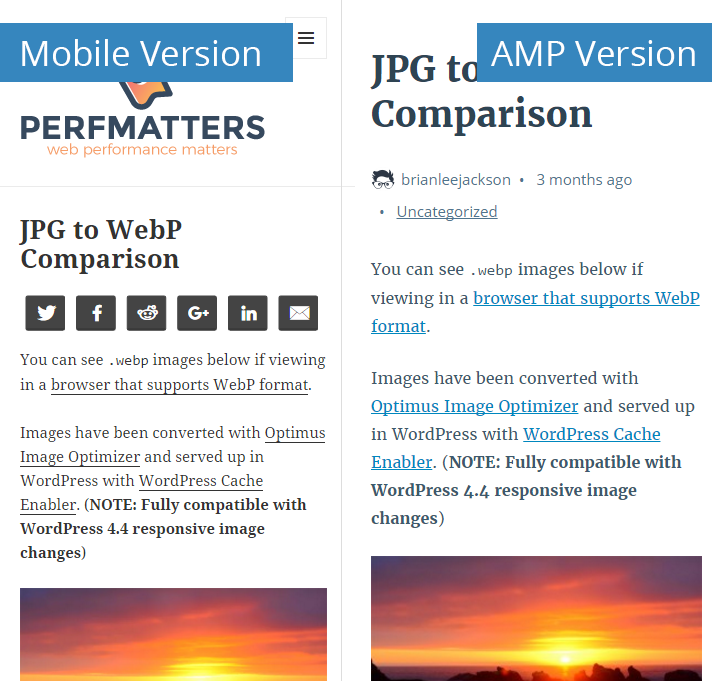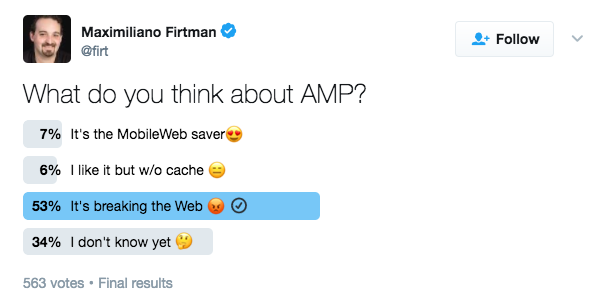When Google’s VP of Engineering- David Besbris was approached and asked about the limitation of the AMP, He said, “AMP is flexible and responsive but it does not support all type of pages and user experiences. It is mainly designed for publishing and content sites. It’s currently not completely suitable to e-commerce. But Google is interested and wants AMP to evolve.”
AMP (Accelerated Mobile Pages), if you are not aware of, let me tell you. AMP is an open source project with Google and Twitter collaboration to empower publisher to create speedy web pages. It is a stripped-down version of mobile web app development with the different set of HTML standards defined. It is called stripped down version because it has stripped HTML’s effective GUI elements like JavaScript and other scripts, some part of CSS etc.
Basically, one has to write specific code for AMP pages apart from normal web page code. For detailed introduction about AMP, have a look at —————–
Before getting into the drawbacks of Accelerated Mobile Pages (AMP), let’s see its benefits first.
AMP is incepted for a purpose. When Google started having concerns regarding user experiences in terms of mobile web pages speed, it approached Twitter and they came up with a diet HTML which served the purpose of AMP. So it has following advantages:
- It may provide an SEO benefit in ranking because of faster page loading.
- It is an open source technology for web app development.
- Because it is Google child, the ranking may affect positively.
- Mobile SERP may gain carousel spot.
- Features like no AMP cache and content serving from own CDN.
- WordPress plugin available for AMP.
You can observe that many benefits are not proven ones, they are just possibilities.
Though Google is working hard to make AMP a success, but it is still far behind the scope.
Why is AMP not recommended?
So far we have understood AMP and had a look at its benefits. And we figured out that benefits are just possibilities. Now, we will discuss its drawbacks one by one.
1. Doesn’t serve ranking purpose
Actually, page load time is not directly responsible for page ranking in organic search results. Page load time is one of the factors but it is always not the main one. AMP doesn’t improve site ranking, it is there to improve the usability.
Credit: trib.tv
2. Difficult to Implement
So far its WordPress plugin is only available, and if you have hardcore HTML developer, then and then AMP can go in your web application development.
3. Lack of important features
Custom site styling doesn’t work here. The CMS Integrations with WordPress is not being supported by AMP. Widgets and sidebars are also way beyond reach. So if your
business (for example, a fashion house) demands the web showcase of custom styling, then forget about AMP!
4. Only AMP js is supported
It supports only its own js functions. Third party or author written js are not supported. Custom JavaScript can be used but with limitations –
It should not exceed 50 MB size limit.
It cannot access data.
That means site written in interactive js, cannot be included in AMP. It is limited only to content based websites like News or blogs, not interactive websites.
5. IE 11 is not supported
If IE 11 is not supported, then how will AMP reach to windows phones?
6. Overhead for coding same web page
In the competition and concern for mobile pages speed, now enterprise will have to bear an extra cost and time for rewriting current websites.
7. Not suitable for video contents
If your website incorporates lots of videos, then videos will take the time to load and purpose of AMP will not be served.
8. No scope for other advertisers
Google AdSense and some defined advertisement portals are only allowed. So if your site earns money by marketing other people’s products on some specific portal, then you are not the beneficiary of AMP, my friend!
So what should be kept in mind while going for Accelerated Mobile Pages (AMP)?
Google says that 40% people abandon the website if page load time exceeds than 3 seconds. Users’ patience cannot be questioned. So if you have made up a mind to write AMP for your website, then following are the key tips for you.
- Give more priority to the accuracy of the website, speed is essential but it comes after accuracy. Ranking in AMP analytics doesn’t guarantee conversion ratio.
- To make your content accurate, give your developers an access to use standard web technologies.
- Don’t devalue your original website. The trust-ship between your original website and customers is inevitable. Don’t let speed overpower the authenticity of your website.
Conclusion:
As you can see that AMP is not ready for the prime time. If you are already ahead in the direction of page speed, then AMP is probably not for you at this moment. The decision to go for AMP depends on many factors like website structure, its features, developer skills and trust relationship between Google and you.
Did this article give you the answers to your questions about AMP, Do let us know your opinion about this article.






